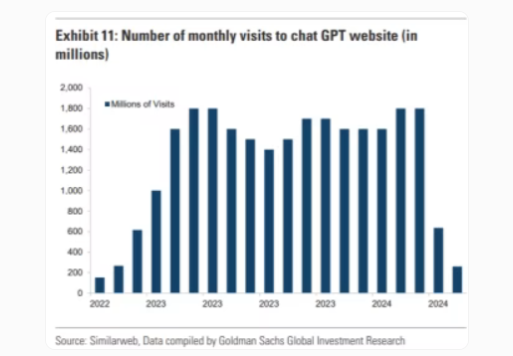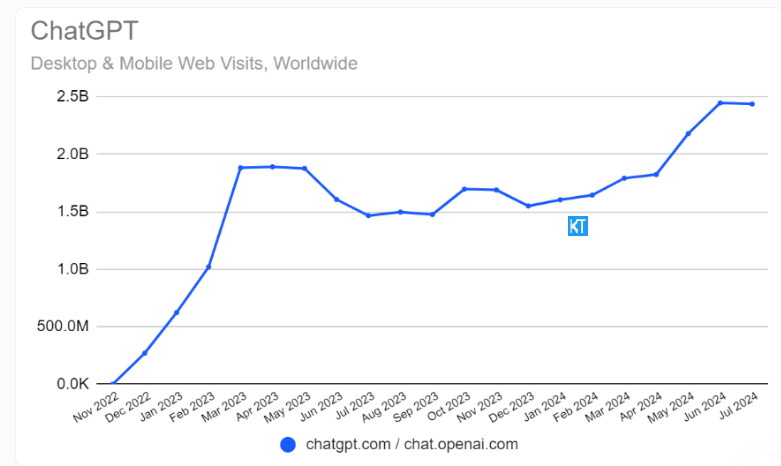Recently, news in the market about the sudden drop in traffic of OpenAI’s ChatGPT has attracted widespread attention, and a report from a Goldman Sachs analyst has intensified investors’ concerns. However, this is not the case. This article will provide an in-depth analysis of the ins and outs of this incident, reveal the key errors in the Goldman Sachs report, and explore the real development status of ChatGPT.
Recently, a report released by Goldman Sachs analyst Peter Oppenheimer triggered a violent reaction in the market. The report mentioned that OpenAI's ChatGPT traffic has dropped significantly. The Financial Times also reported this, which made many investors worry about the prospects of artificial intelligence-related stocks.

However, all this was actually due to a simple mistake made by Goldman Sachs in its data analysis. Goldman Sachs used data from Similarweb but ignored the fact that OpenAI recently changed its domain name from chat.openai.com to chatgpt.com. Due to the change of this domain name, the original traffic will naturally decrease.
In fact, new data from Similarweb shows that ChatGPT usage is diametrically opposed to what Goldman Sachs reports. Data shows that the number of users of ChatGPT has increased by 66.2% in the past year, and it is still the most popular generative artificial intelligence application. Although other competitors such as Anthropic's Claude and Perplexity are catching up, they have not yet been able to catch up with ChatGPT.

What’s even more exciting is that OpenAI also recently announced that its weekly active users have reached 200 million, which has doubled from November 2022. The company's enterprise business is also growing steadily, with rising demand for using OpenAI models through APIs. In addition, many Microsoft applications are also using OpenAI technology, such as GitHub C opilot, which has also performed well recently.
Of course, OpenAI has also encountered some challenges during its development, such as communication problems, dissatisfaction among security researchers, and high operating costs. But for now, lack of demand is not the challenge facing OpenAI.
One analysis shows that OpenAI's revenue this year is expected to be between $3.5 billion and $4.5 billion, which is considerable for a company that will only begin serious commercial operations at the end of 2022. However, the cost behind this may be as high as $8.5 billion.
Highlight:
Goldman Sachs' report incorrectly showed a decline in ChatGPT traffic because it did not take into account OpenAI's domain name change, causing market panic.
Similarweb data shows that ChatGPT users increased by 66.2% year-on-year and is still the most popular AI application.
? OpenAI announced that it has 200 million weekly active users and is expected to have revenue of $3.5 billion to $4.5 billion this year, with its enterprise business continuing to grow.
All in all, the errors reported by Goldman Sachs highlight the importance of data analysis and once again prove the strong momentum of ChatGPT as a leading AI application. Although OpenAI faces challenges, its future development is still full of potential. The market should view relevant information rationally and avoid making wrong judgments based on one-sided information.